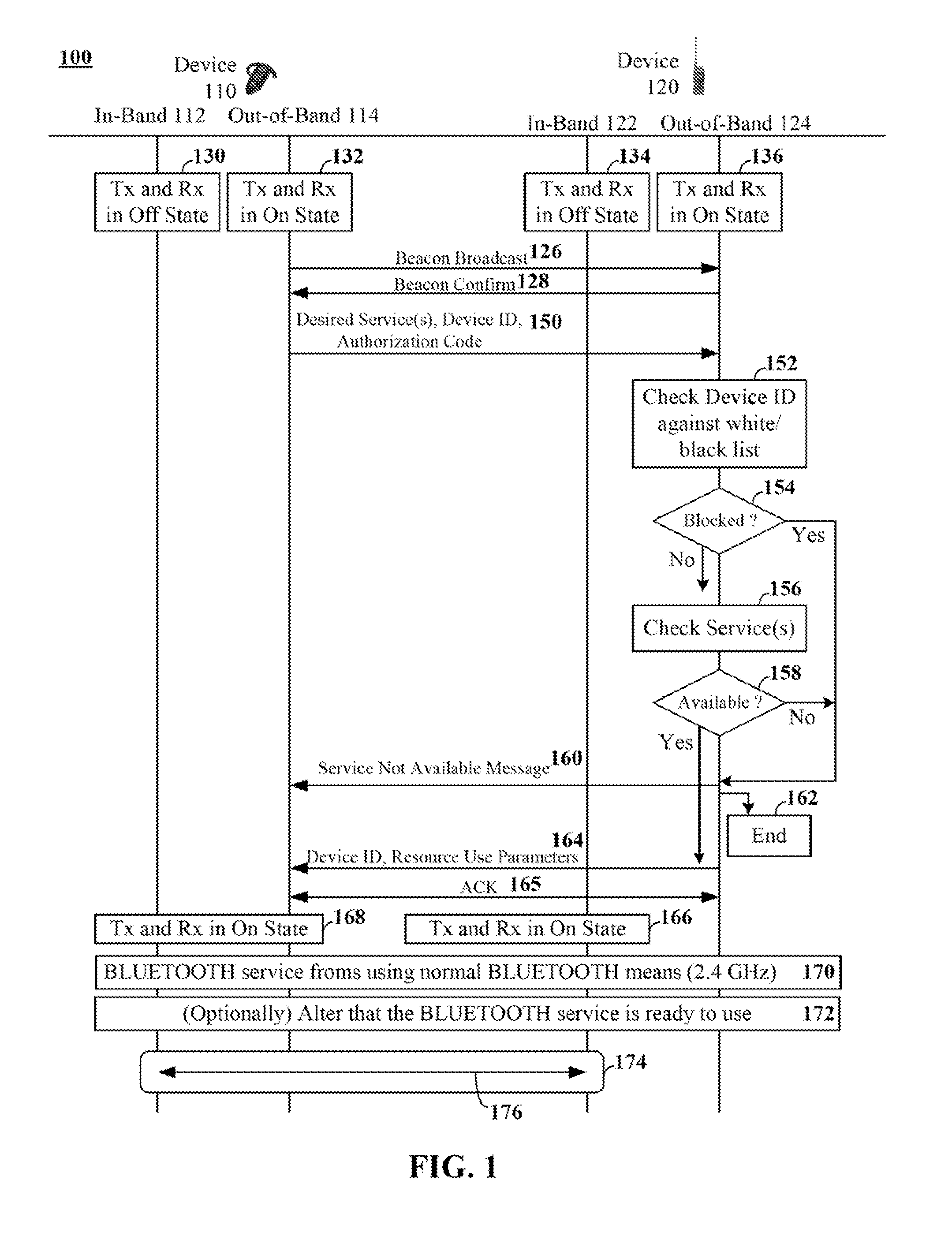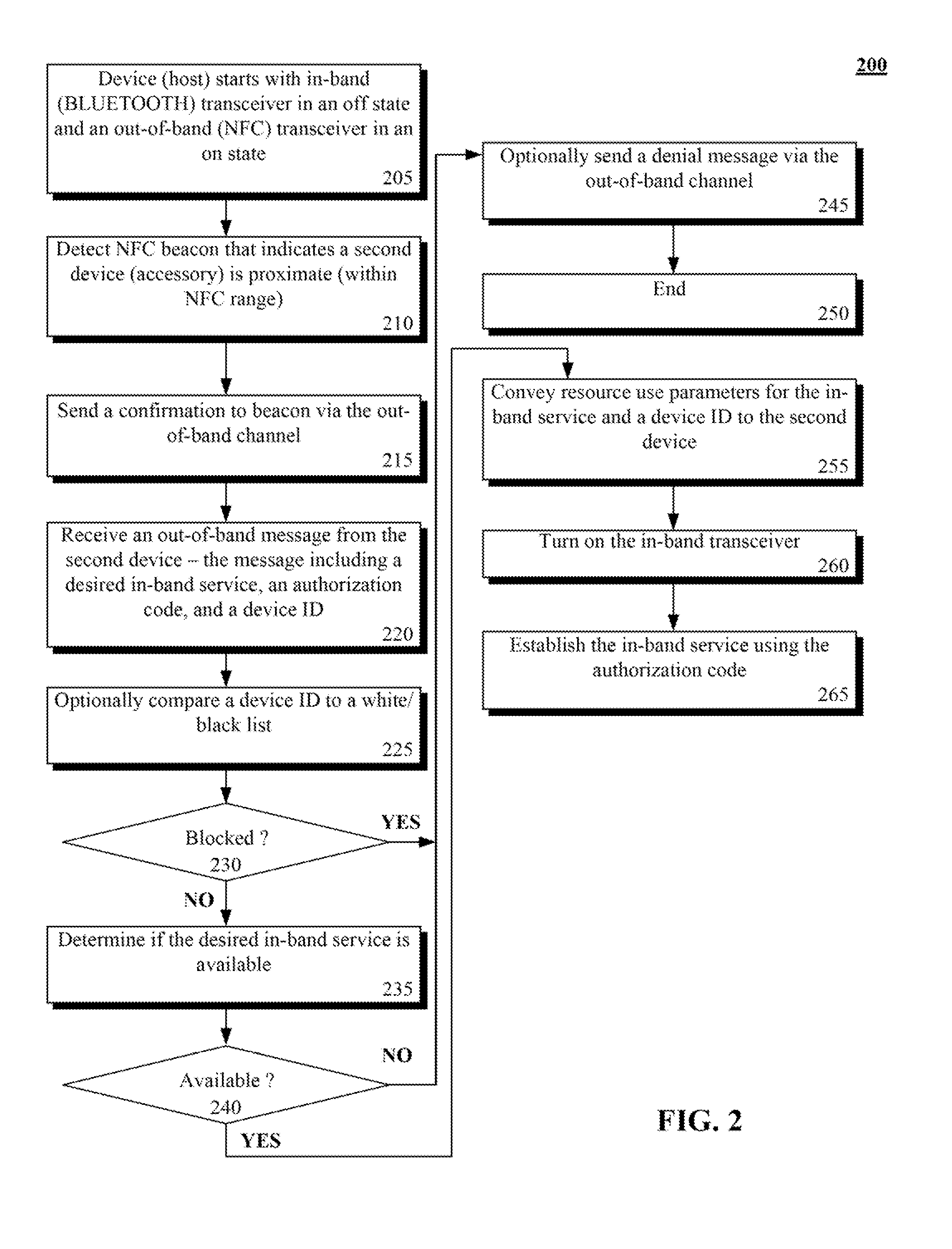Pairing devices using data exchanged in an out-of-band channel
a data exchange and wireless technology, applied in the field of wireless device pairing using, can solve the problems of non-standard profile support, failure to respond with a failure, and inability to receive a non-propagating signal successfully,
- Summary
- Abstract
- Description
- Claims
- Application Information
AI Technical Summary
Benefits of technology
Problems solved by technology
Method used
Image
Examples
Embodiment Construction
[0019]An embodiment of the disclosure permits pairing of BLUETOOTH devices using data conveyed over an out-of-band (OOB) channel. In one embodiment of the disclosure, the device pairing detailed herein is compliant with the BLUETOOTH v2.1 secure simple pairing (SSP) pairing mechanism.
[0020]Conventional methodologies treat BLUETOOTH services (e.g., BLUETOOTH profiles) as polled services, where devices broadcast a list of services that are provided by that device, which other devices can receive and process. In an embodiment of the disclosure, a BLUETOOTH device initiating a connection can specify, via an OOB message, what services they desire from a proximate device, (e.g., a host device) along with device address information identifying the requesting device and an authorization code for establishing the service. The host device can receive this request and can determine whether the requested service is available from the host device. If not, the host device can convey a negative re...
PUM
 Login to View More
Login to View More Abstract
Description
Claims
Application Information
 Login to View More
Login to View More - R&D
- Intellectual Property
- Life Sciences
- Materials
- Tech Scout
- Unparalleled Data Quality
- Higher Quality Content
- 60% Fewer Hallucinations
Browse by: Latest US Patents, China's latest patents, Technical Efficacy Thesaurus, Application Domain, Technology Topic, Popular Technical Reports.
© 2025 PatSnap. All rights reserved.Legal|Privacy policy|Modern Slavery Act Transparency Statement|Sitemap|About US| Contact US: help@patsnap.com



